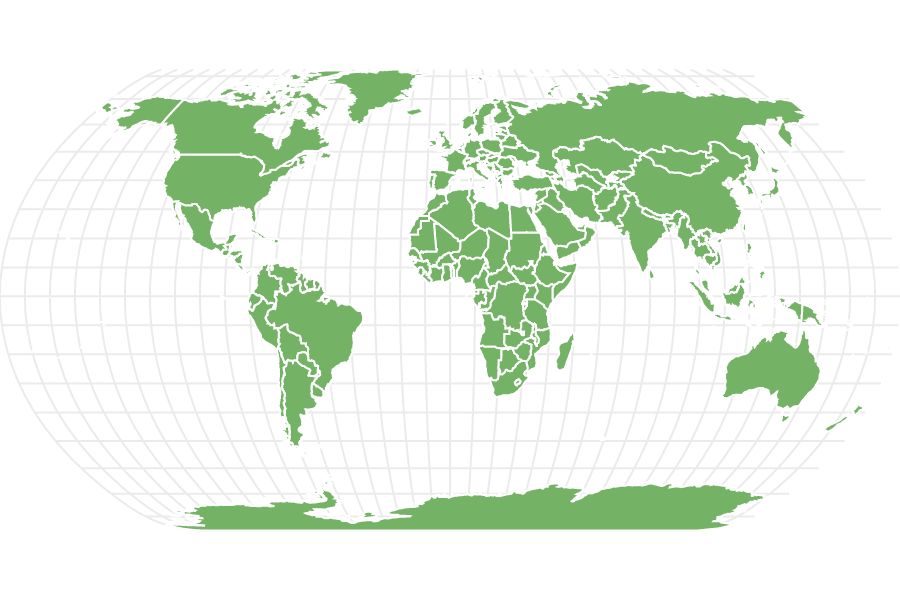Vegavis was one of the earliest birds to have a sound-producing organ
Advertisement
Vegavis Scientific Classification
- Kingdom
- Animalia
- Phylum
- Chordata
- Class
- Aves
- Order
- Vegaviiformes
- Family
- Vegaviidae
- Genus
- Vegavis
- Scientific Name
- Vegavis iaai
Read our Complete Guide to Classification of Animals.
Vegavis Conservation Status
Vegavis Facts
- Prey
- Fish
- Main Prey
- Fish
- Fun Fact
- Vegavis was one of the earliest birds to have a sound-producing organ
- Most Distinctive Feature
- Vegavis had a bony beak with teeth
- Distinctive Feature
- Vegavis had an inflated neck
- Habitat
- High latitudes in Antarctica
- Predators
- Kaikaifilu
- Diet
- Carnivore
- Type
- Extinct bird
- Special Features
- Vegavis had sound producing organs similar to that of modern birds
- Origin
- Antarctica
- Number Of Species
- 1
Vegavis Physical Characteristics
- Weight
- 5 pounds
- Length
- 2 feet
- Venomous
- No
- Aggression
- Low
View all of the Vegavis images!
Vegavis is a genus of extinct birds that lived in present-day Antarctica during the Late Cretaceous Period (Maastrichtian stage) about 66 million years ago. The extinct bird belongs to the Vegaviidae family, a group distantly related to modern ducks and geese. Scientists believe it was the earliest Mesozoic bird to have a sound-producing organ. The discovery of the Vegavis was interesting because it provided the first definitive proof that birds similar to some modern species lived alongside dinosaurs by the end of the Maastrichtian stage of the Cretaceous. Vegavis belonged to the Anseriformes order of the Aves, which is related to waterfowl.
Description and Size
Vegavis is an extinct bird from the Vegaviidae family, a prehistoric relative of ducks and geese in the Late Cretaceous. Paleontologists discovered the ancient bird’s fossils on Vega Island, a small island off the coast of the Antarctic Peninsula. This is the portion of Antarctica that juts northward toward South America. The name “Vegavis” is a combination of Vega Island’s name and “avis,” the Latin word for bird. The specific name, “iaai,” comes from the acronym for the Argentine scientific expedition to Antarctica—Instituto Antartico Argentino (IAA).
The bird resembled a modern loon, but a close examination of its skeleton indicates that it is a close relative of modern-day ducks and geese but not a direct ancestor. It featured various distinct physical traits missing in modern birds, including teeth, an inflated neck in its skeletal system for fat storage during extended migratory treks, and a bony beak.
Vegavis was a foot-propelled, diving bird about 2 feet long and weighed roughly 5 pounds. It also had claws on its wings that would have helped it to hunt prey while flying or holding on to tree branches.
Its feathers are well-preserved, and studies show they are supple and flexible, similar to the feathers of the modern duck. The feather shafts, which range in color from dark green to gray, have a thick tip. Each feather was approximately 3 inches long and weighed less than 0.03 ounces. The nature of the feather may have made it easier for the Vegavis to fly through forest canopies where it lived.

The
Vegavis
was a bird that lived in Antarctica 66 million years ago. It looked similar to the loon, pictured above.
©iStock.com/BrianLasenby
History and Evolution
The Mesozoic Era is called the “Age of Dinosaurs.” However, among the less-discussed stars of that era are the birds. Birds evolved during the Jurassic Period, about 165 to 150 million years ago, meaning they lived alongside the non-avian dinosaurs.
Scientists have discovered fossils of primitive birds like the Archaeopteryx, representing a bridge between birds today and the non-avian dinosaurs. Studies reveal that the Archaeopteryx had features of modern birds, such as feathers. But it also had typical dinosaur characteristics such as a tooth in its beak, a bony tail, and even killing claws.
Birds gradually evolved alongside the dinosaurs over a period of almost 100 million years. The distinct group of birds that we are familiar with today probably evolved around 80 million years ago.
Vegavis was one such creature. It developed adaptations that not only allowed it to survive in its native habitat but also helped its lineage to survive beyond the mass extinction that ended the Cretaceous Period. These include a small and sleek body and the ability to fly and swim. Another interesting adaptation observed in the Vegavis was the ability to produce honk-like sounds from its throat like its modern relatives.
Scientists believe this bird represented the earliest example of birds to make such sounds in the fossil record. Experts made this deduction because it was the earliest Mesozoic bird to have a syrinx. The syrinx, a vocal organ for sound production in birds was made of rigid cartilage rings that supported soft tissues. The vibration of these tissues created bird songs and calls.
Diet—What Did Vegavis Eat?
One of the most striking features of Vegavis was its unusually large, curved beak, which was about as big as that of the modern ibis. To get a meal, experts have theorized that this bird was probably an aggressive hunter.
We do not know the exact diet of the Vegavis. In the early days of its discovery, Vegavis was thought to be herbivorous, eating seeds and leaves. However, a recent re-examination revealed that Vegavis probably preyed on fish. Vegavis, being a diver, would have propelled itself into the water to catch fish. Its diet probably consisted of worms, aquatic invertebrates, and amphibians that lived at the water’s edge.
Habitat—When and Where Did Vegavis Live?
Vegavis lived in Antarctica. It had wings for flying and webbed feet for swimming. As a diving bird, it flew by propelling itself with its feet, making it likely just as suited to living in the water as it was to live in the air. It was a high-metabolizing bird that could thrive at high-latitude locations in Antarctica. Antarctica was ice-free and warmer during the Cretaceous Period, which lasted from 145 to 66 million years ago, and it was home to rich, temperate forests.
Vegavis—Threats and Predators
Due to Vegavis‘ ability to survive on air and water, It was not vulnerable to many predators. It might have been exposed to Kaikaifilu, a giant sea mosasaur known as a top marine predator in Antarctica during the Late Cretaceous. Another possible threat to the Vegavis was a large bird called Tropeognathus, which means “hooked jaw” in Greek.
Discovery and Fossils
The fossils were discovered on Vega Island in western Antarctica in 1992. However, a comprehensive description of this fossil was not published until 2005. This was because extracting the fossil from the concretion that held the soft, delicate bird bone took some time.
In 2013, While studying the bones from a second specimen found beside the initial one, Dr. Clarke made an exciting discovery. The well-preserved skeleton had a goose-like asymmetrical syrinx, indicating that this ancient bird may have honked like some modern birds. A syrinx’s shape links closely to the sounds it can produce. The fossil record has been instrumental in reconstructing studies and beliefs. Vegavis fossil specimen is held by the Museo de La Plata, in Argentina.
Extinction—When Did Vegavis Die Out?
The precise time of Vegavis‘ extinction is uncertain. However, it lived throughout the Maastrichtian stage and may have survived the Cretaceous-Tertiary (K-T) mass extinction that wiped out the non-avian species alive at the time.
Similar Animals to Vegavis
Similar Animals to Vegavis include:
- Polarornis — This is a genus of prehistoric birds that lived on Seymour Island in Antarctica during the latter part of the Cretaceous. This was around the same time that Vegavis was alive.
- Australornis — The Australornis is an extinct genus of seabirds from New Zealand. It lived during the Paleocene epoch about 58 million years ago. Australornis is one of the oldest flying seabirds ever found.
- Teviornis — This extinct bird genus lived during the Maastrichtian, towards the end of the Cretaceous Period, some 70 million years ago. It is known from fossils collected from the Nemegt Formation of Gobi and southern Mongolia.
Related Animals
View all 25 animals that start with VVegavis FAQs (Frequently Asked Questions)
Is Vegavis a type of dinosaur?
No, Vegavis is not a type of dinosaur. It is a genus of extinct birds that lived about 66 million years ago in Antarctica. Since it was around before the dinosaurs went extinct, it lived alongside them but is more closely related to modern-day birds.
Where was the Vegavis fossil found?
The first fossil of the Vegavis was discovered in the Cape Lamb deposits of Vega Island, Antarctica, by members of Argentina’s Antarctic institute in 1992. However, it wasn’t fully described until 2005.
What does the word Vegavis mean?
Vegavis is a genus name that combines the name of Vega Island and “avis,” the Latin word for bird. It translates as “Vega Island bird.”
When was Vegavis alive?
Vegavis lived during the Maastrichtian stage of the Late Cretaceous Period. This was about 70.6 million to 66 million years ago.
How big was the Vegavis iaai?
Vegavis iaai was about 2 feet long and weighed roughly 5 pounds.
Thank you for reading! Have some feedback for us? Contact the AZ Animals editorial team.
Sources
- Sci News, Available here: https://www.sci.news/paleontology/vegavis-iaai-vocal-organ-mesozoic-bird-04274.html
- Washington Post, Available here: https://www.washingtonpost.com/news/speaking-of-science/wp/2016/10/13/66-million-year-old-bird-fossil-is-the-oldest-squawk-box-ever-found/
- Wikipedia, Available here: https://en.wikipedia.org/wiki/Vegavis
- Carnegie, Available here: https://carnegiemnh.org/mesozoic-monthly-vegavis/


















